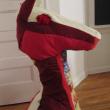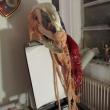A monstrous interpretation of childhood memories
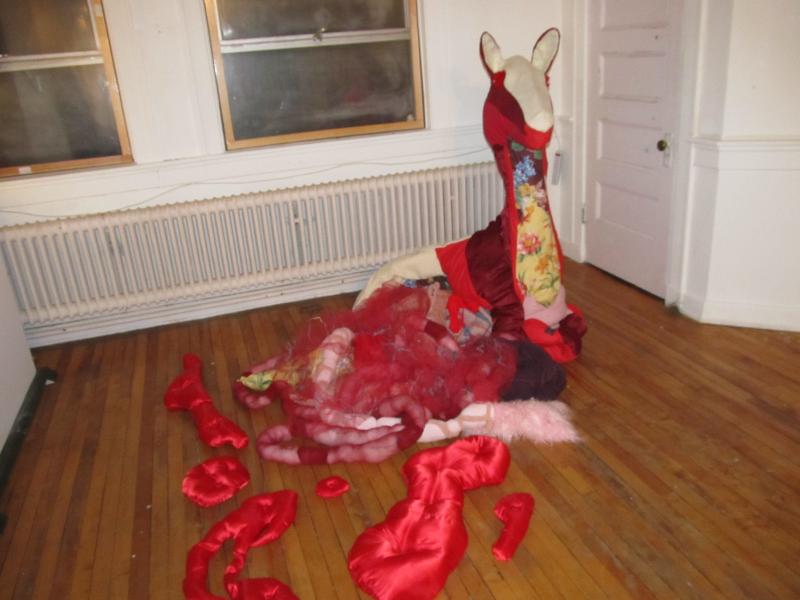 “Torn,” an installation at Lincoln Street Center. (Photo by Kay Stephens)
“Torn,” an installation at Lincoln Street Center. (Photo by Kay Stephens)
 Artist Oliva Vanner. (Photo by Kay Stephens)
Artist Oliva Vanner. (Photo by Kay Stephens)
 An inspirational message in the studio. (Photo by Kay Stephens)
An inspirational message in the studio. (Photo by Kay Stephens)
 The entrails. (Photo by Kay Stephens)
The entrails. (Photo by Kay Stephens)
 Side view of “Torn.”
Side view of “Torn.”
 “Decapitation.” (Photo by Kay Stephens)
“Decapitation.” (Photo by Kay Stephens)
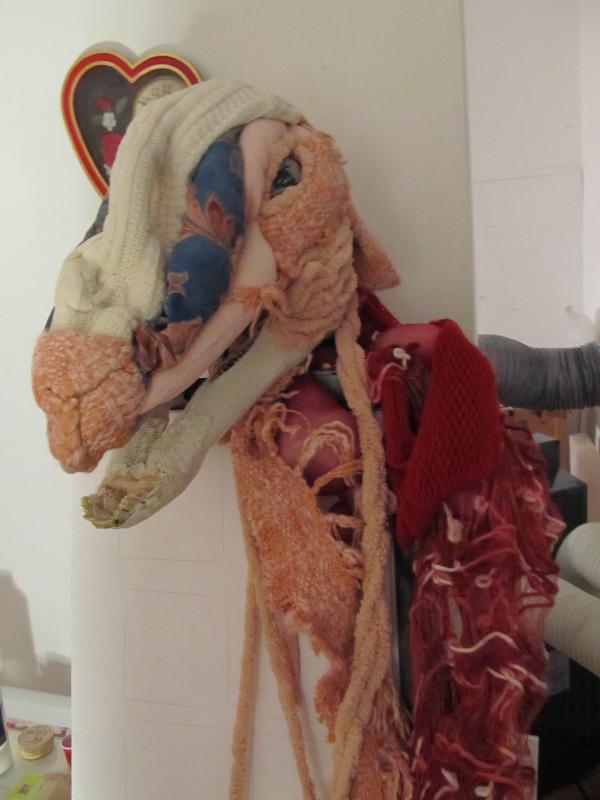 Sice view. (Photo by Kay Stephens)
Sice view. (Photo by Kay Stephens)
 “Torn,” an installation at Lincoln Street Center. (Photo by Kay Stephens)
“Torn,” an installation at Lincoln Street Center. (Photo by Kay Stephens)
 Artist Oliva Vanner. (Photo by Kay Stephens)
Artist Oliva Vanner. (Photo by Kay Stephens)
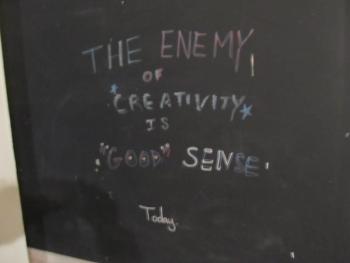 An inspirational message in the studio. (Photo by Kay Stephens)
An inspirational message in the studio. (Photo by Kay Stephens)
 The entrails. (Photo by Kay Stephens)
The entrails. (Photo by Kay Stephens)
 Side view of “Torn.”
Side view of “Torn.”
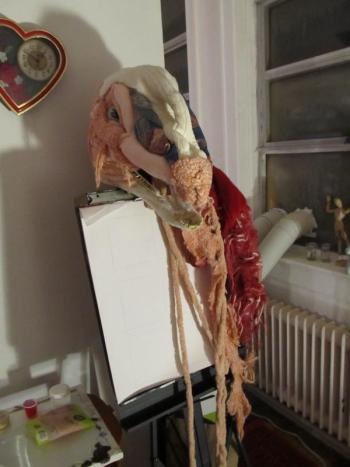 “Decapitation.” (Photo by Kay Stephens)
“Decapitation.” (Photo by Kay Stephens)
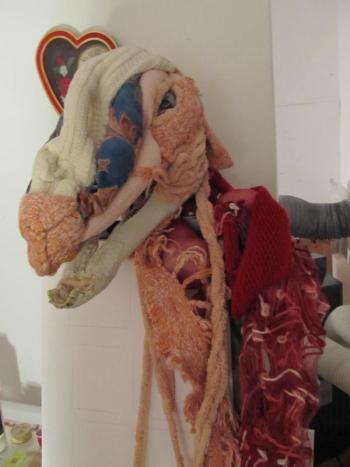 Sice view. (Photo by Kay Stephens)
Sice view. (Photo by Kay Stephens)
ROCKLAND—In a former classroom now converted to a studio at Lincoln Street Center, one curious creature, approximately four foot high, dominates one side of the room. It resembles a deer made with bright red and pink fabric and a whimsical floral pattern on its chest, akin to what would cover your grandmother’s upholstered chintz chair.
Spilling out from its body are fabric entrails, ropes of intestines in red satin and pink tulle. This sculpture by Olivia Vanner, a Rockland artist, is called called “Torn” and it’s meant to delight, then disturb.
Vanner, 23, received her degree in Art from the University of Maine at Farmington. She works two jobs, one full-time at Rock City Coffee, and one part-time at Center for Maine Contemporary Art at the front desk. When she has free time in the evenings, she heads to her studio at Lincoln Street Center and tries to clear her mind to create. “I’ve got a full schedule,” she said. “It depends on how each day goes; if I have enough energy after work, I’ll head to the studio. I try to work three evenings a week if I can.”
It took Vanner half a year to sew, crochet and handcraft “Torn.”
At first glance, the bright and whimsical colors of the creature are attractive to the eye; inviting you to come closer and inspect it. That’s when the jarring realization hits that, it is in fact, a dying or dead creature. Even though the entrails aren’t real, there’s a feeling of unease standing so close to it. A subconscious cue as you look down to make sure your feet aren’t touching it.
“That’s definitely what I wanted to have come across to my audience,” said Vanner.
In her Artist Statement, Vanner said, “I investigate adult interpretations of reality influenced by childhood experience. More specifically, my interests lie in the anxiety and fear hidden in the comfort and safety of childhood.”
“What inspires the piece and what I do in art, is to bring life—or death—to the ideas and emotions surrounding the representation of the animal in connection to materials from childhood environments,” she said. “I was trying to show there’s a dichotomy in memories of childhood and the realities of adulthood—that memories change as you become an adult, and that feeling exposed and vulnerable can be both beautiful and grotesque. It’s all in how you experience it and what sticks with you.”
Another of Vanner’s installations, “Decapitation,” was lurking just behind a demi wall.
“Decapitation” drapes over her easel, two-feet wide and two-feet long. This sculpture, once floating over a plush pool of blood, looks out to the viewer with yarn-wrapped eyes. Its prehistoric features are composed of pale knit sweaters, fleece muscles, gaudy red scarves. Its exposed entrails spilling over the easel are made from chunky, fuzzy yarn. This piece was also inspired by the recurring themes of material, memory, beauty, and gore. In this piece, Vanner was pushing the envelope even further by including realistic teeth in the jaws of the body-less beast. The identity of the animal is more abstract.
“This was very intentional,” she said. “I wanted to see how far I could disguise its species and how far I could hint at realism within this piece.”
On the Open House night November 22, people of all ages wandered into Vanner’s studio, including children.
“For a small child looking at these sculptures, they seem huge,” she said. “To an adult, they are not so big. But it’s about [the death of that animal] and that’s something I want to see my audience create a dialogue around.”
“Luckily the children were respectful and seemed to find the work interesting,” she said. "I think some of them didn’t find it to be their cup of tea. I also noticed a wide range of reactions in adults. Some were delighted by the various textures and patterns, while others seemed more concerned by its dismemberment. No matter what age, they all were tempted to get a closer look and touch the fabrics in the piece.”
Vanner, who also creates paintings, animations, and drawings in addition to her installations, finds inspiration in objects and materials such as upholstery, plush fabrics, dollhouses, even home videos on VHS, which she said, “carry past emotions we have invested in them.” (See embedded animation.)
Vanner has submitted some of these works into local exhibitions and some of her painting and sculptures can be found on the walls of the Merrill Center at the University of Maine at Farmington.
For more info on Vanner’s work visit her website or her Instagram page at info-@oliviavanner
Kay Stephens can be reached at news@penbaypilot.com
Event Date
Address
United States












